There’s a phrase, sometimes attributed to Mark Twain, that “War is God’s way of teaching Americans geography”. If so, then viral outbreaks are God’s way of teaching the world about Chinese geography.
Despite being bigger than London or Washington DC, Wuhan is not somewhere that many people outside of China know much about and will now sadly be forever connected to the Coronavirus outbreak.
I’ve not actually been to Wuhan myself but did briefly visit nearby Yichuan once after doing the cruise down the Three Gorges (where I saw a man riding a motorbike with a live pig on his back!). We’ve got some friends from Wuhan and had been thinking about visiting a few times so I had been reading up on the city and surrounding area before the virus and have discovered a few interesting things.
So, to give its reputation a boost, here are:
10 Things You Might Not Know About Wuhan (no coronavirus included)
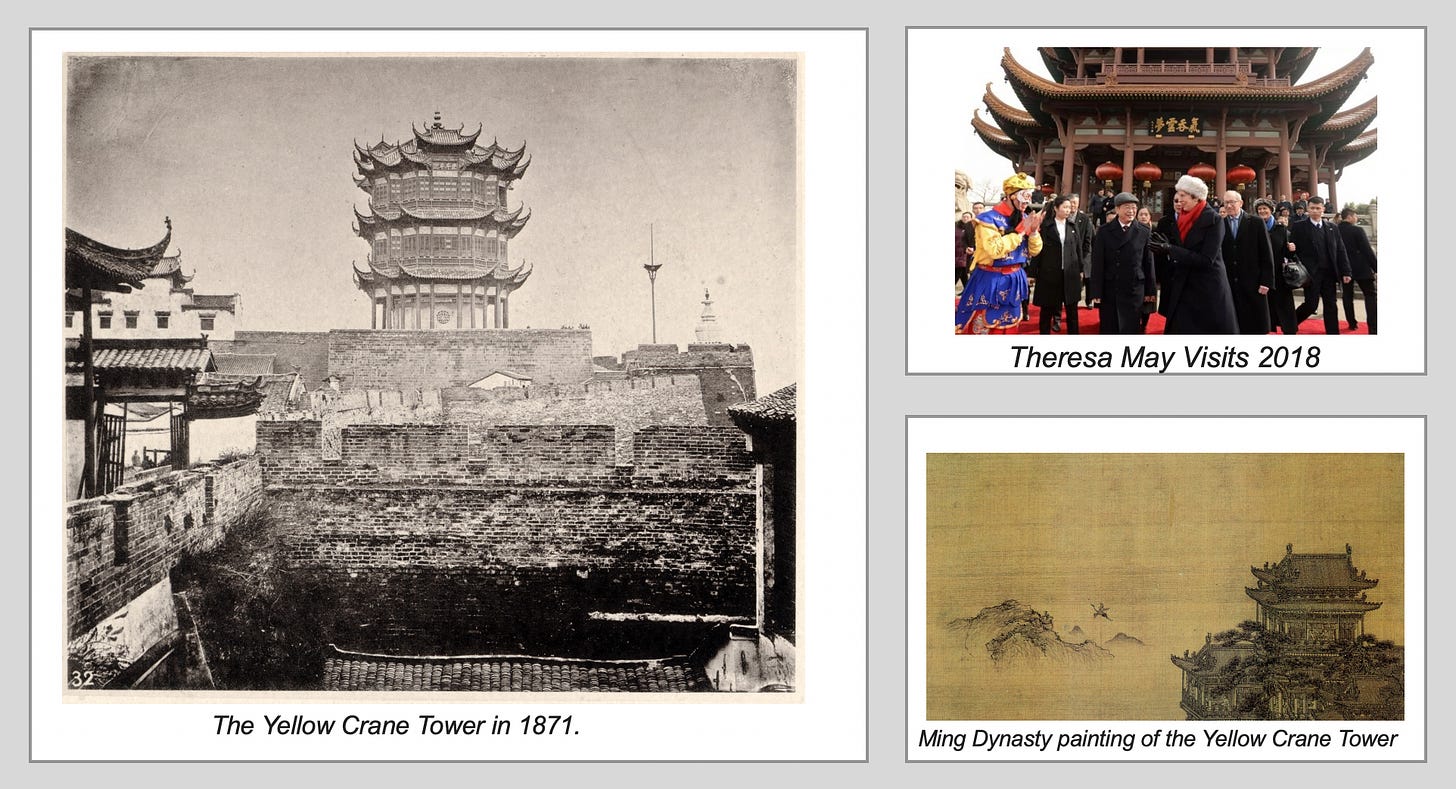
Wuhan’s most famous sight is the Yellow Crane Tower, a pagoda looking building atop a hill that’s been there (in varying forms) for 1700 years. It’s been the subject of many famous paintings and poetry including Chairman Mao and China’s most legendary poet Li Bai was was even visited by PM Theresa May in 2018. Don’t think she wrote a poem about it though. Not enough wheat fields.
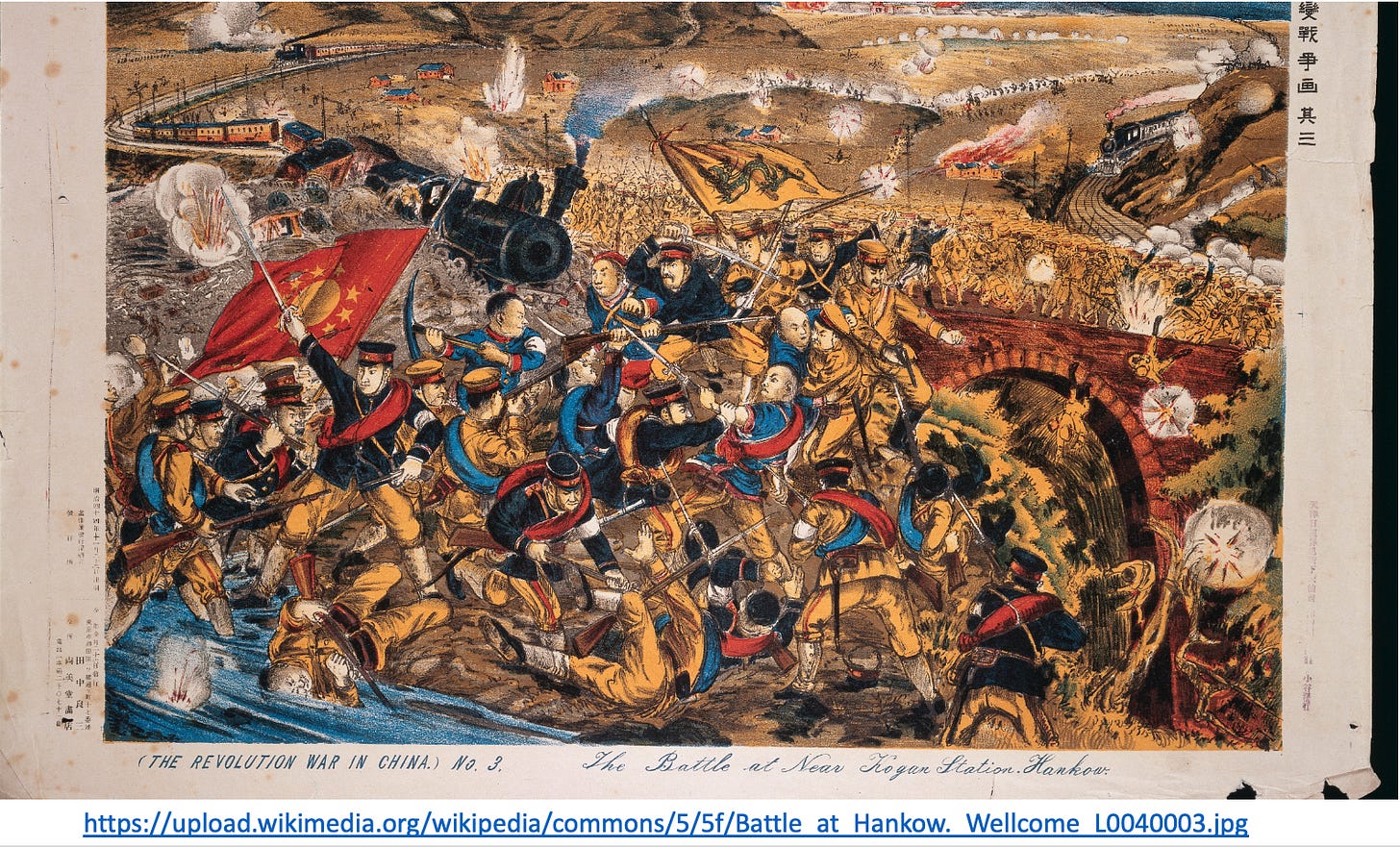
On October 10th 1911, Wuhan was the site of the Wuchang Uprising which was the first step in the Xinhai Revolution which led to the downfall of the Qing Dynasty and turned China into a republic after thousands of years of imperial rule.
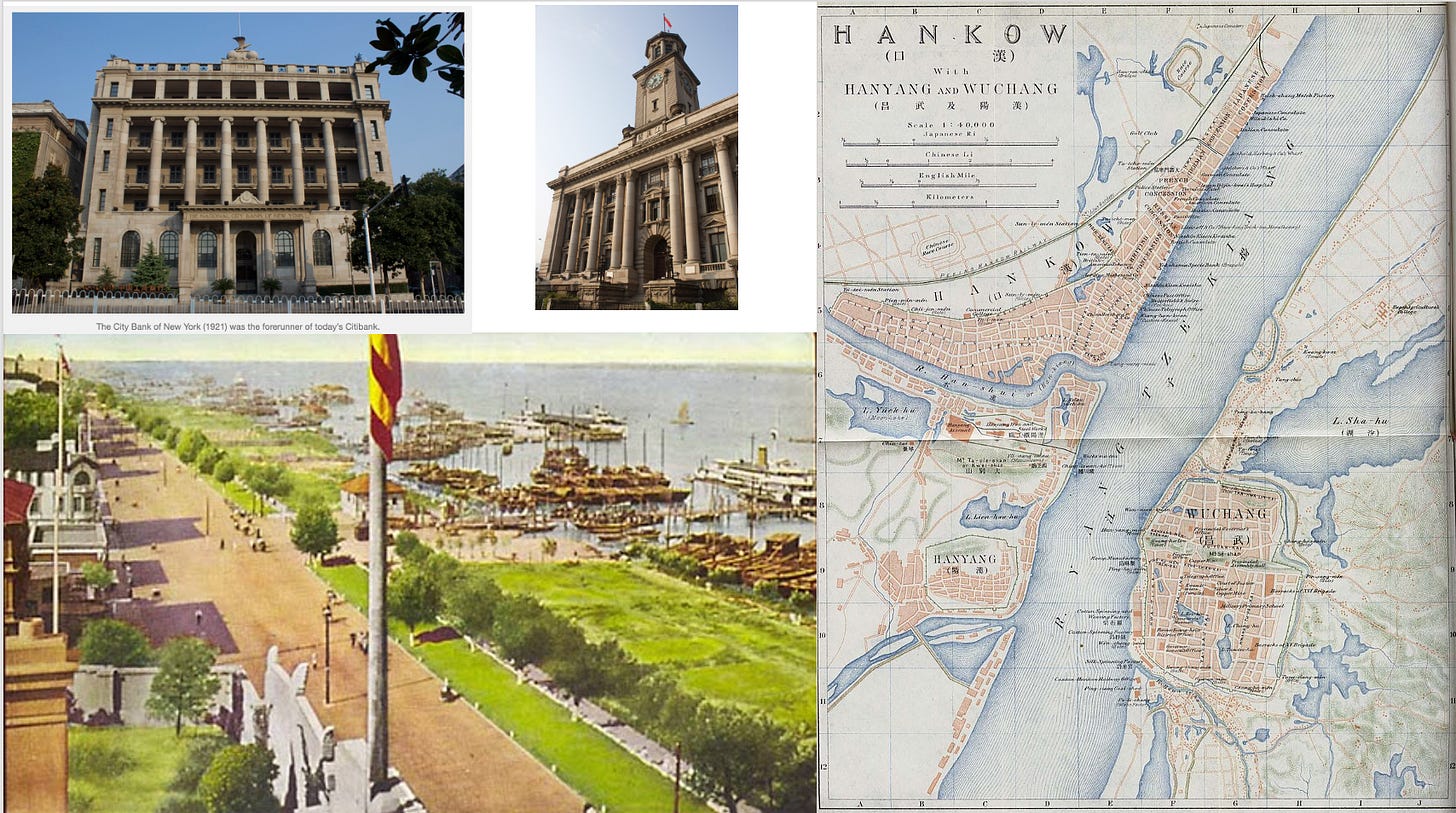
Wuhan used to be three separate cities that were later combined. One of these was Hankow where the British, French, Russians, Germans and Japanese had concessions similar to the more well known one in Shanghai. Many of the buildings from this period are still there.

Nearby to Wuhan, the Battle of Red Cliff took place nearly 2000 years ago which is an important part of The Romance of the Red Kingdoms, which is novel which is sometimes seen as a Chinese equivalent of Shakespeare and has inspired countless books, comic, movies and computer games.
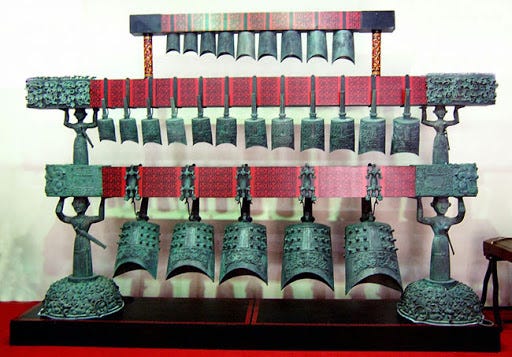
Similar to the Terracotta Warriors, in 1978 the 2400 year old Zhenghouyi Bells were discovered in the tomb of an ancient Marquis and are now housed in Wuhan Museum. Casts have been made of the bells so you can hear music played at the time of Confucius. The bells themselves have been played three time since they were rediscovered including in 1997 when Hong Kong returned to Chinese rule.

Wuhan is the hometown of Li Na, China’s most successful tennis star who won the French and Australian Opens. Li Na is noted for her individualism and refusal to follow standard Chinese sports coaching practices.

Hot Dry Noodles is Wuhan’s most famous food. The sesame paste it uses often has peanuts in it so I’ve never tried it but it’s meant to be great and is also vegan friendly! There’s been a cartoon meme going around China of a Hot Dry Noodle character in hospital getting encouragement from other Chinese regional foods.
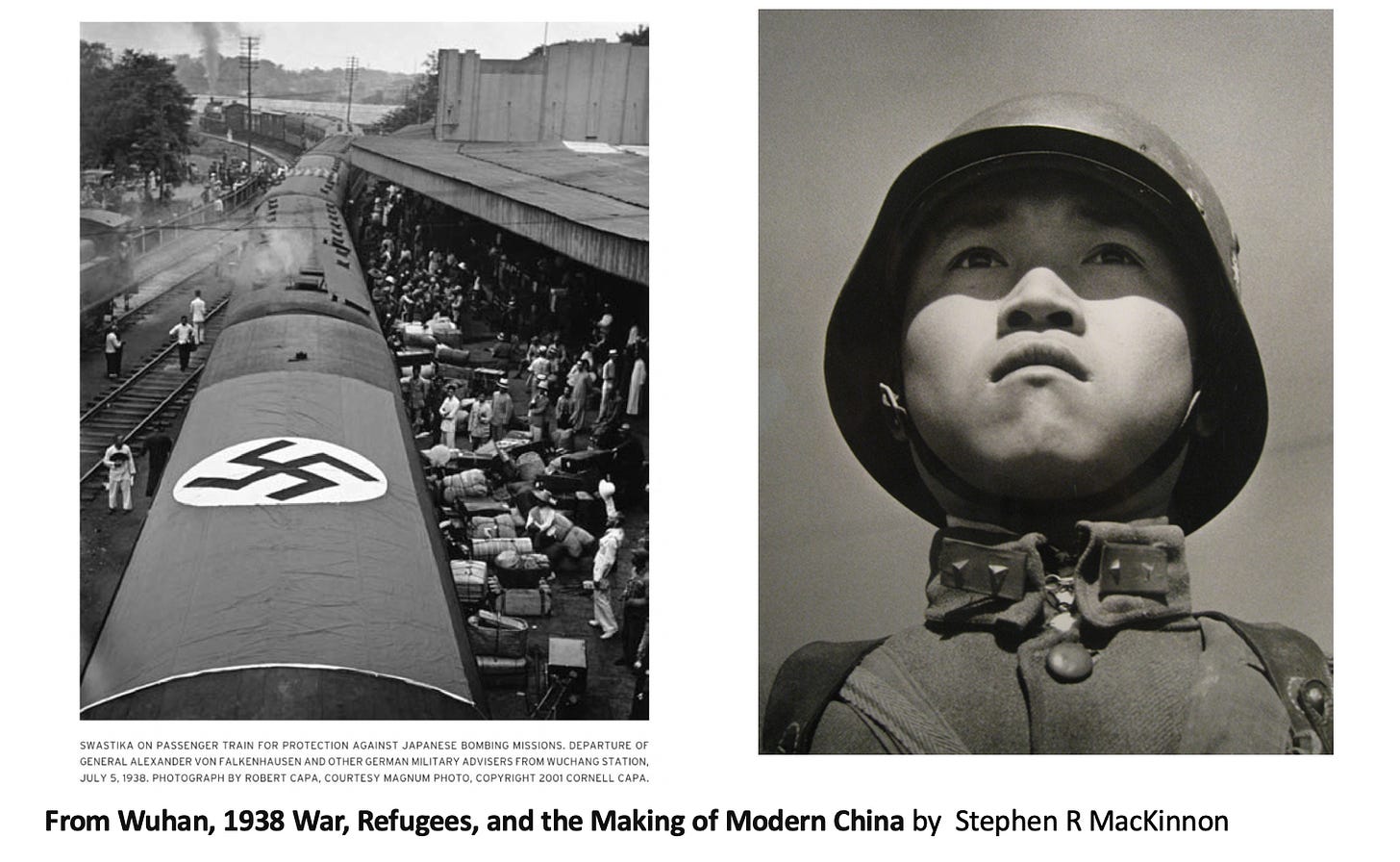
In 1938, Wuhan was briefly the capital of China after the fall of Nanjing to the Japanese. For a short time it was the centre of the Chinese resistance and was visited by Robert Capa, said to be the greatest photojournalist of all time. He took the photos above of Chinese soldiers and a train full of German military advisers avoiding bombing by the Japanese by putting swastikas on the roof. In a recent essay by historian Robert Bickers, the city is put an the centre of the fight against fascism:
Wuhan’s history then is a history that was intertwined with wider global developments, international trade, imperialism, the rise of anti-colonial nationalism, the fascist onslaught of the 1930s, and slowly evolving resistance to it, first in Spain and then in China. “
During the 30s, the city was visited by the poet WH Auden (most famous nowadays for the ‘Stop all the Clocks’ poem in Four Weddings and a Funeral) and Christopher Isherwood (who wrote the book Cabaret is based on). They met Chiang Kai Shek, Zhou Enlai and other important Chinese leaders and wrote ‘We would rather be in Hankow at this moment than anywhere else on earth. History, grown weary of Shanghai, bored with Barcelona, has fixed her capricious interest upon Hankow’. In the extract from an analysis below, they compare the Japanese invasion to deadly virus invading the city:
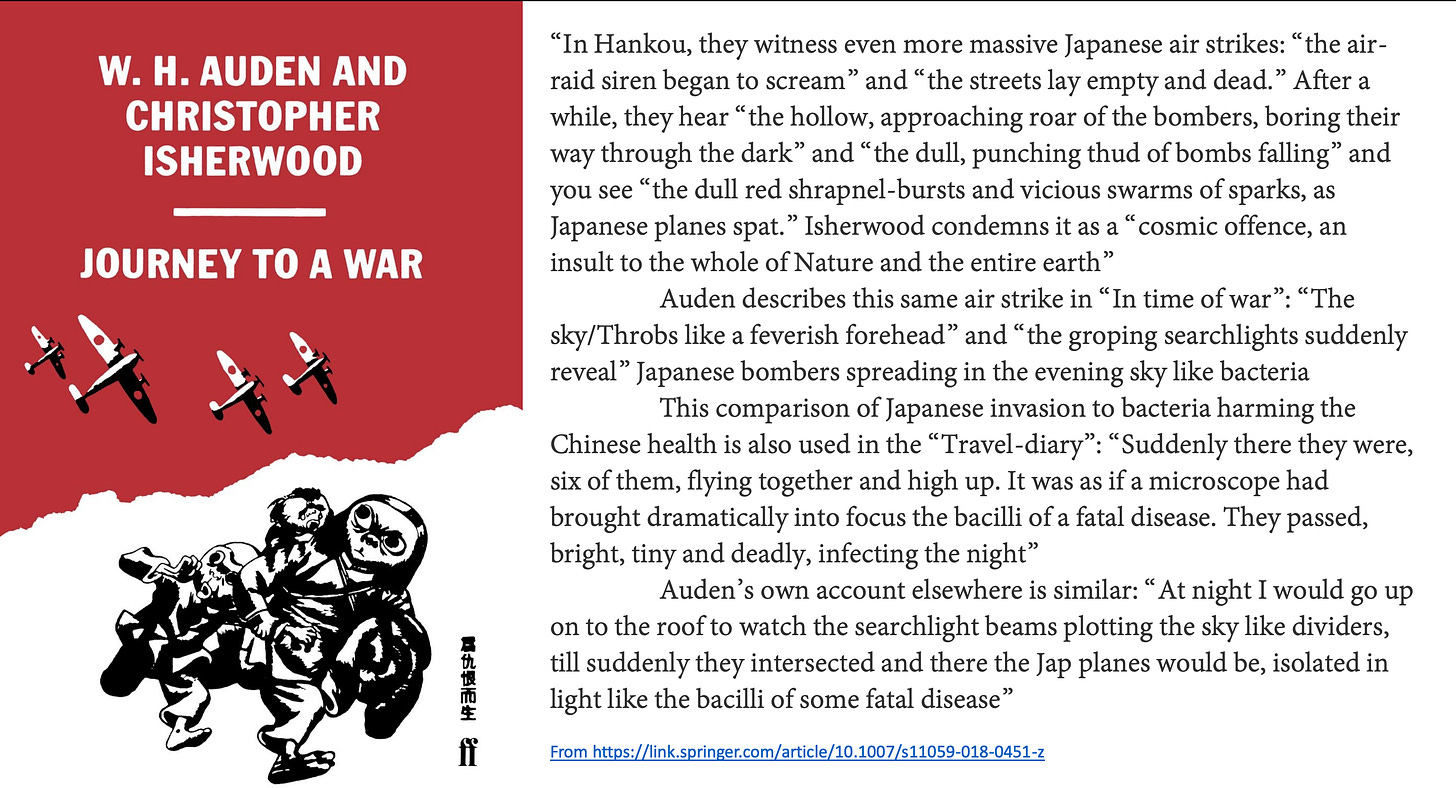
10. Wuhan has a claim to be the birth place of punk music in China. This great article recounts the bands and bars with a particular focus on Wu Wei and his bar named Wuhan Prison. Wu Wei is a big fan of The Pogues and some of his band SMZB’s albums featuring bagpipes and tin whistles! Another song called “Great Wuhan” (大武汉) shares his love for the city:
She will be beautiful, she will get freedom,
It won’t be like a prison here forever,
Break the darkness, there will be no more tears,
A seed has been buried in my heart.Here is a punk city, Wuhan!
We sing this song for you, Wuhan!
We start to rebel and fight in Wuhan,
Everybody cheers for you!
And finally, Wuhan’s punk scene also includes the band AV Okubo who toured China with influential British band Gang of Four back in 2013. Their album was produced by Andy Gill from the band. Gill died of respiratory issues at the start of February with his last ever concerts being held in November 2019 in Beijing and Shanghai. I saw them back in 2013 in Beijing (while Ai Wei Wei was hanging out by the bar) where they encored with a great duet of ‘Damaged Goods’ played with AV Okubo which you can see here:


